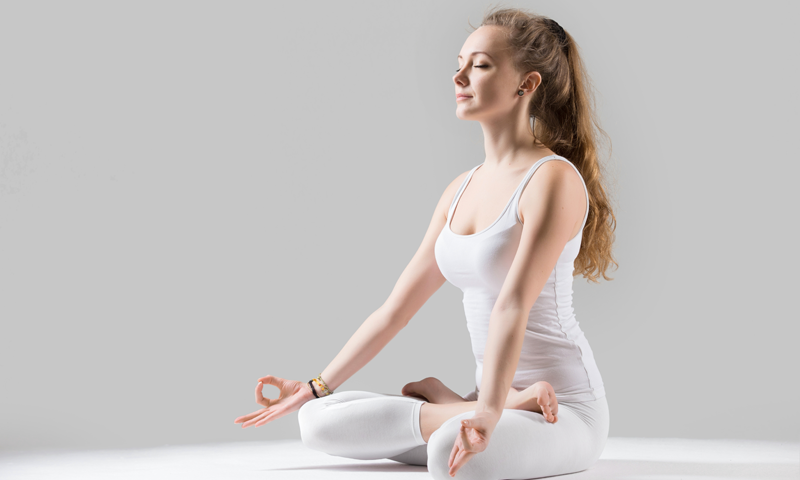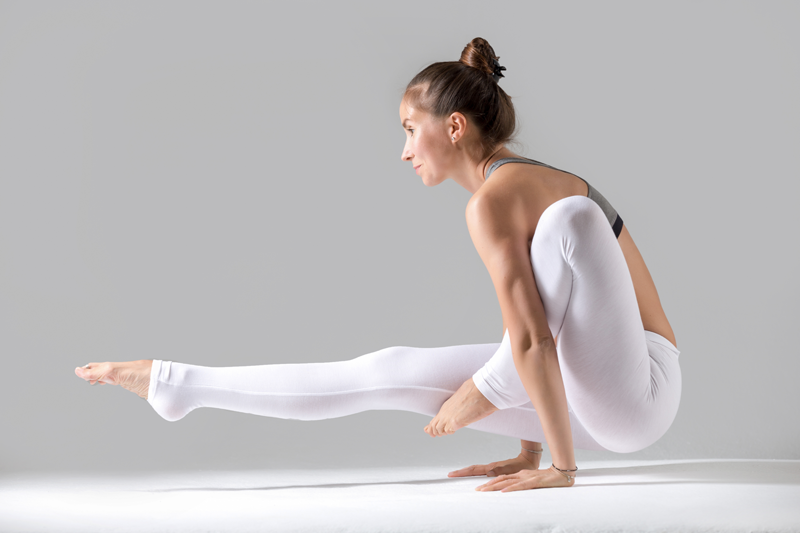
Can Yoga Improve Communication?
22nd June 2018
How to do corpse pose in yoga
26th June 2018What are Mudras?

Often used when practising Hinduism and Buddhism, mudras are symbolic hand gestures that act as an “energetic seal of authenticity”. Sometimes, mudras combine hand gestures with a movement of the wrists, elbows, or even the entire body. Today, a variety of mudras are used in dance, spiritual practices, and yoga. When used in yoga, the gestures are believed to facilitate meditation and healing. When used this way, practitioners are encouraged to wear comfortable yoga clothes to accentuate the effects of the mudras. In this article, we explore exactly how mudras are used in yoga.
How Are They Used in Yoga?
When used in yoga, mudras are often used alongside breathing exercises. Typically, they are practised in a seated position such as Padmasana, Sukhasana or Vajrasana. Mudras are believed to stimulate different areas of the body and affect the overall flow of energy. Each of the mudras is designed to direct energy to a different area of the body and benefit one’s physical and emotional health. Some yogis believe that mudras manipulate the mind-body connection to allow energy to travel to a specific point.
The Elemental Structure of the Hand
Before practising mudras, it’s important to understand the elemental structure of the hand. Many yogis believe that there are five elements present in the human body. These are space, air, water, fire, and earth. The hands act as energetic points for these elements, so the use of mudras allows us to manipulate them. A specific hand gesture is used depending on which elements one wishes to manipulate. The thumb is the energetic point for space, the index finger is the energetic point for air, the middle finger works with fire, the ring finger is associated with water, and the little finger is the energetic point for earth.
Popular Mudras and How to Practice Them
Today, there are hundreds of different mudras used worldwide. Below, we explore some of the most popular ones and discuss how to practice them.
Gyan
Regarded as the most popular mainstream mudra, Gyan is often used alongside meditation. When prac-tised correctly, Gyan can improve concentration and the memory. With this in mind, it is popular amongst those studying or seeking to gain knowledge. The mudra can also be used to gain insight into a specific area of your life.
To practice Gyan, gently touch your index finger to the tip of your thumb. When the two are connected, ensure to keep your other three fingers straight.
Buddhi
Used to achieve mental clarity, Buddhi is another popular mudra. The mudra can help those trying to un-derstand their subconscious mind; for instance, those exploring the meaning of their dreams. Additionally, this mudra can be used to improve internal and external communication.
To practice Buddhi, touch your thumb to your little finger. When in place, remember to keep the other three fingers straight.

Shuni
Shuni, or Shoonya as it sometimes referred to, is used to improve intuition and purify emotions and thoughts. With this in mind, the mudra is popular amongst those suffering from depression and mental illness.
To practice Shuni, touch the tip of the middle finger to the tip of the thumb. Remember to keep the other three fingers relaxed.
Prana
Regarded as one of the most important mudras, Prana is used to activate dormant energy in the body. In Sanskrit, Prana is the life force within all living things. Using this gesture can activate your personal energy and help you to live in harmony with those around you.
To practice Prana, touch your ring and little finger to the tip of your thumb. Remember to keep the remaining fingers straight.
Dhyana
Often associated with the Buddha, Dhyana is used to facilitate meditation. Practising Dhyana encourages deeper concentration and inner peace.
To practice Dyhana, sit on your yoga mat with your hands facing upward. Next, place the back of your right hand on top of your left palm.
Surya
Associated with the fire element, Surya can aid digestion and improve the metabolism. Additionally, the mudra increases the core body temperature to prevent colds and illness.
To practice Surya, bend your ring finger to the bottom of your thumb. Your thumb should now be touching the knuckle of your ring finger. Remember to keep your remaining fingers straight and out of the way.
Apana
Apana is another popular mudra. When used correctly, the gesture can improve digestion and relieve constipation. With this in mind, the mudra is ideal for those suffering from digestive disorders such as IBS. Additionally, the mudra can aid the emotional digestion of bad news and trauma.
To practice Apana, touch your second and third fingers against your thumb. The way you practice this mudra may vary between disciplines. Some yogis believe that the two fingers should rest behind the tip of the thumb, while others prefer to touch them against the tip of the thumb, instead.
Vayu
Associated with space and air elements, Vayu can be used to combat issues related to air imbalances. For instance, the mudra can relieve trapped wind, flatulence, bloating, and abdominal discomfort. Additionally, the gesture can relieve pain and discomfort in the muscles and joints.
To practice Vayu, touch your thumb to the knuckle of your index finger. You can apply as much pressure as you want to the knuckle, just be careful not to strain the joint. Many yogis believe this mudra has a similar effect to Gyan. However, when using Gyan you must connect your thumb to the tip of your index finger.
In Summary
Whether you’re an avid yogi or a complete beginner, mudras can benefit the body and mind when used correctly. Before practising mudras, consider picking up a comfortable yoga mat to practice on. If possible, place the mat in a quiet area of your home where you will not be distracted.

